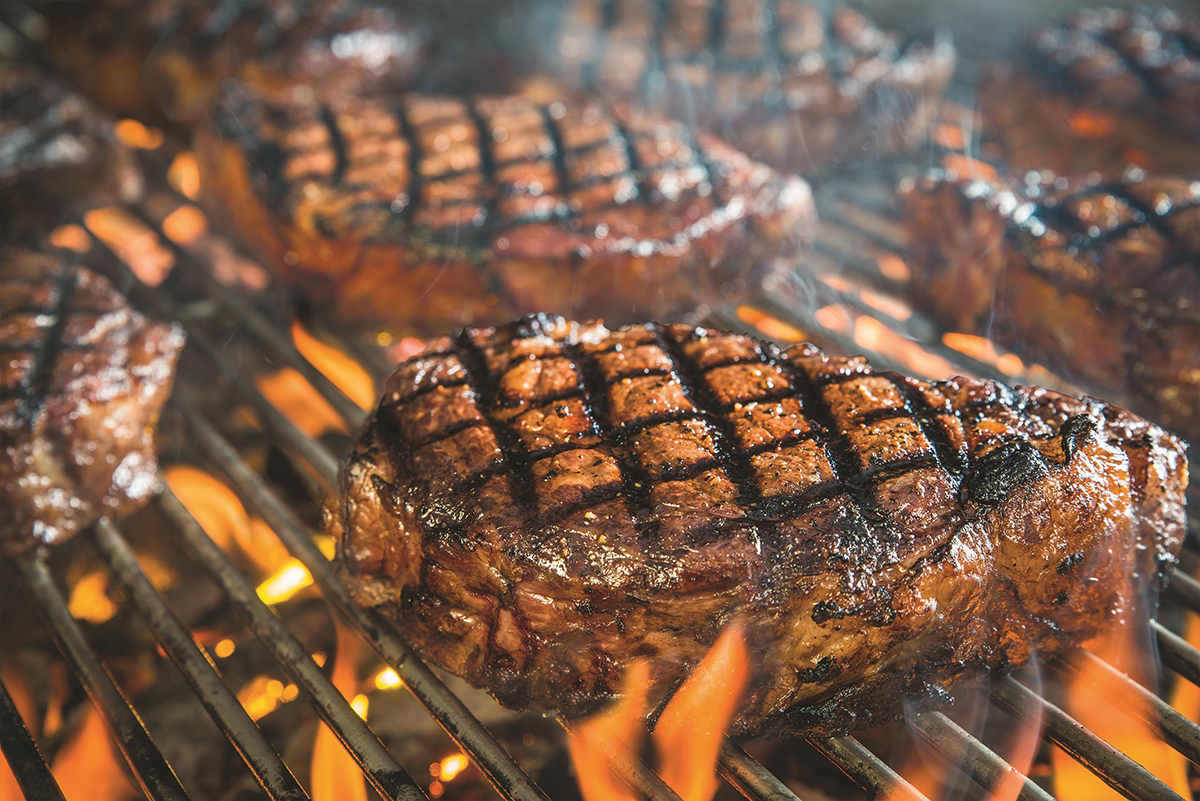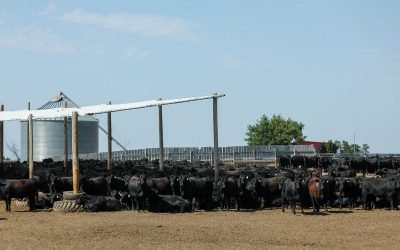
Flavor’s secret ingredient
Many factors create a good eating experience, but delivery is key
by Abbie Burnett
October 5, 2020

A thunderstorm rolls in above the parched Great Plains with all the usual effects, but no rain. Disappointment, like a tender steak without flavor.
Just as it takes certain factors to produce a great rainfall, so it goes with flavor. To quell a drought, you need rain. To satisfy consumers, you need flavor. Hint: it’s in the marbling.
Texas Tech University meat scientist Jerrad Legako spoke to that point during the American Society of Animal Science conference earlier this year.
“No question, flavor is at least equivalent to tenderness in importance to the overall eating experience, if not a little more,” he said. That’s partly due to improved beef tenderness since the late 1980s.
But what is flavor, and how do we experience it?
It’s a complex combination, said Legako.
More than taste on the tongue, flavor takes in perceptions of texture and mouth feel. It’s “olfaction,” as the scientist evokes the world of smell, and chemical reactions on the tongue that perceive spiciness. Ambiance and prior experiences complete the impression.
All of these affect perceptions of flavor, but Legako’s team looks for a nuanced key to the best beef-eating experiences.
“With the sensitivity of the olfaction system, volatile compounds are incredibly important for our perceptions of flavor,” he said.
Volatile because they evaporate at room temperature, the organic compounds start as sugars, amino acids, lipids and thiamines, breaking down in beef’s aging, storage and cooking processes.
All but the fats are water soluble and provide basic tastes like sweet, sour, salty and bitter.
Then cookery enters with its Maillard reaction that reduces sugars and proteins to the volatile compounds like aldehydes we enjoy as a robust flavor profile. It’s how such flavors as nutty, roasted, garlicky, whiskey and honey get into browned foods like dumplings, cookies, biscuits, marshmallows—and steaks, of course.
“With time and temperature, you can kind of start to think about this as a chemistry equation,” Legako said. “You’re driving that reaction at different rates just depending on exposure time and the level of heat.”

Lipids, the top contributor, produce flavor through oxidation, he said, citing Australian studies: “Fat is the delivery system.” Among beef cuts with varying fat levels, those with the most would always deliver more of the same volatile compounds.
To be clear, the flavor components fat delivers come not from the fat but from the effects of cookery on amino acids and sugars, Legako said.
“Yet they’re dissolving in that fat, retained in that high-fat sample and being delivered,” he said, “an increased sensory response or a more intense beef flavor through the greater delivery of those volatile compounds.”
Basically, fat serves as a reservoir to deliver flavor.
Legako and team tested this reaction across different cookery types, higher degrees of doneness and different grades of beef. The consistent find? The higher the grade, the better the flavor, increasing linearly from Standard to Prime.
“This is at least some support for marbling content in a way influencing volatile compound delivery,” Legako said.
For a good thunderstorm, you need moisture, instability and a lifting mechanism. For good flavor, you need aging and heat, but it takes ample marbling to really deliver. That starts on the ranch.
You may also like
Purpose Follows Passion
A chance opportunity. A change in career direction. And meat science was changed forever. Dr. Gary Smith originally had no plans to become a meat scientist. But thank goodness he did.
Certified Angus Beef Recognizes Beef Quality Research
First-place honors go to Andres Mendizabal, an international student pursuing a Ph.D. in animal science at Texas Tech University. His research is titled, “The Accuracy of USDA Yield Grade and Beef Carcass Components as Predictors of Red Meat Yield.”
Not all good days are sunny and warm
Stress of any kind affects performance and health, but also well-being and behavior, a special focus for CSU animal scientist Lily Edwards-Callaway. Her team’s literature review found shade benefits vary by location, structure type and the weather.



